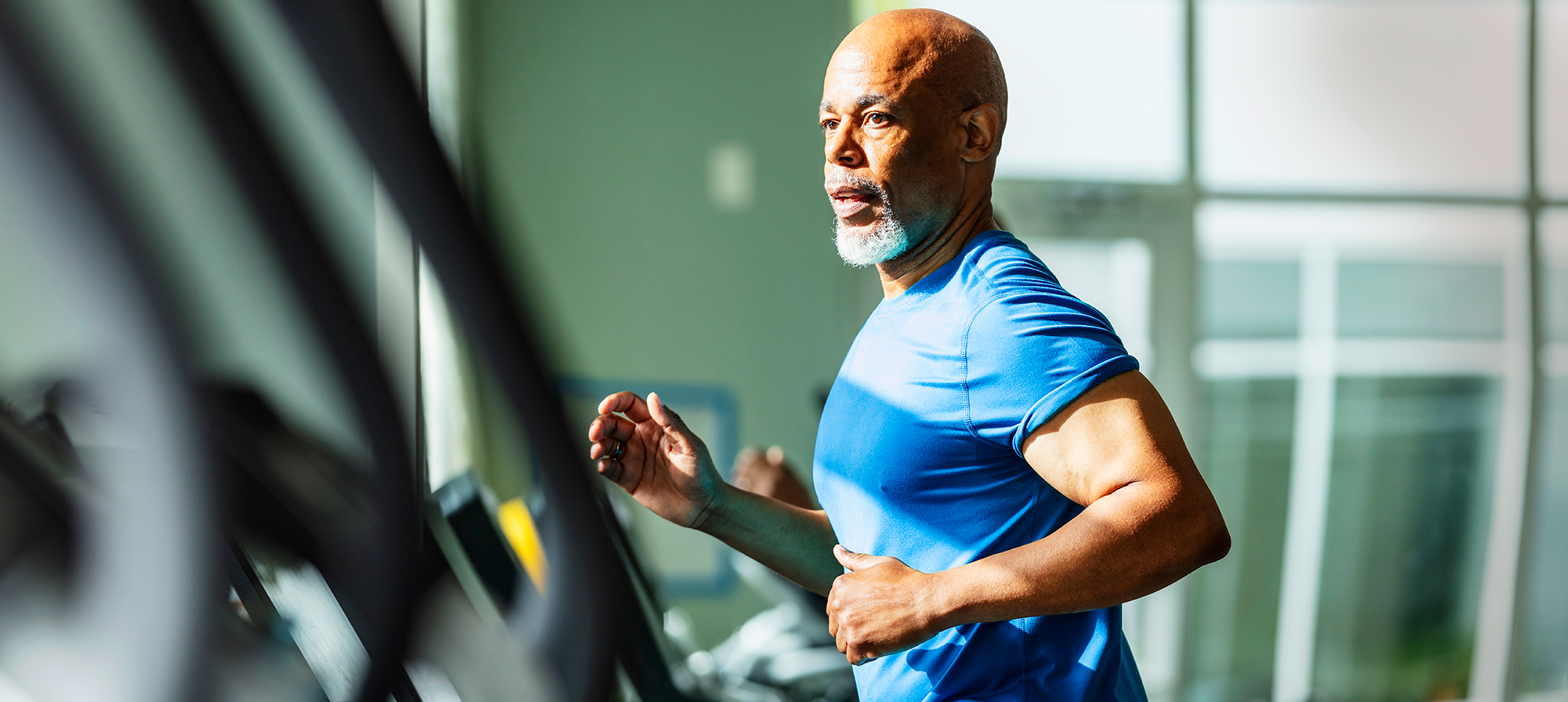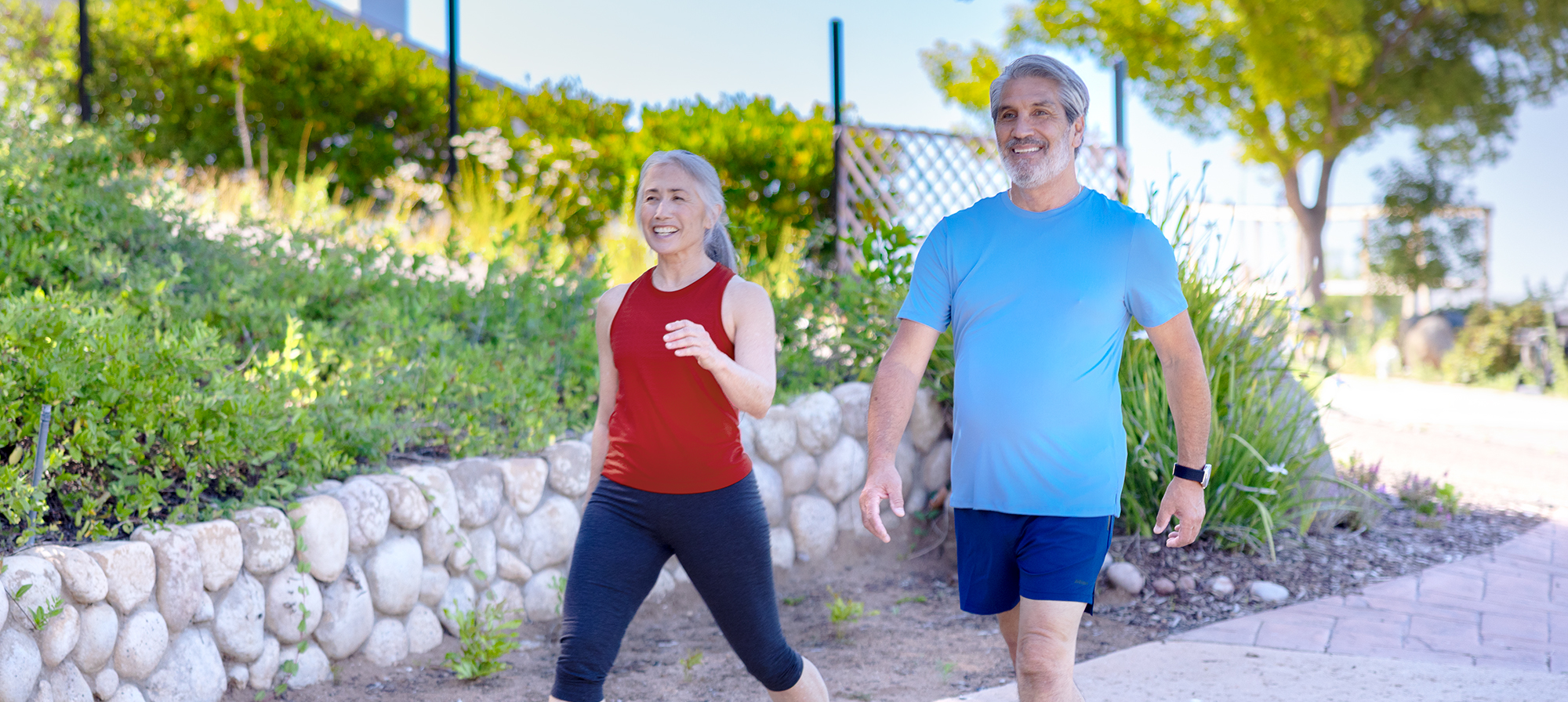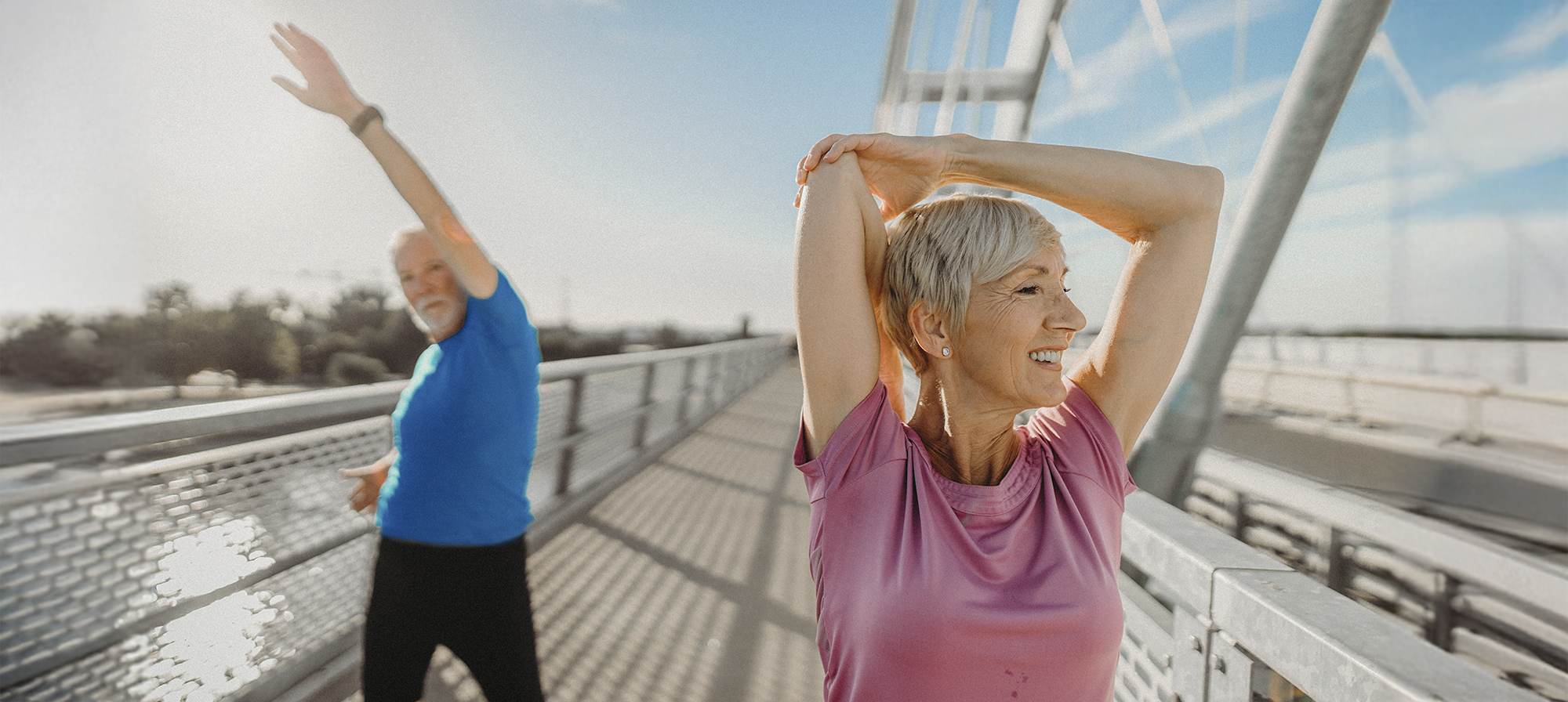You’re getting the right amount of recommended exercise per week. But when you’re not working out, you’re sitting, which can harm your health in many ways. If you’ve become an active couch potato, these 4 tips can help.
You walk briskly for 30 minutes a day, every day. You do strength training workouts at the gym twice a week. You even golf and play pickleball every now and then—just for fun. You’re no couch potato, right?
Not so fast. You may be getting the right amount of recommended exercise per week—150 minutes of moderate aerobic activity and at least 2 sessions of strength training. But what about the rest of the time? Do you have a desk job? Do you spend a lot of time in your car? Do you watch a lot of TV? If so, you might be an active couch potato.
An active couch potato is someone who meets the guidelines for the recommended amount of exercise but otherwise leads a sedentary lifestyle.

The hallmarks of a sedentary lifestyle
Think about a typical day in your life. Aside from working out, consider the other activities you tend to do each day. Do those activities involve a lot of sitting or lying down? If so, then you are likely leading a sedentary lifestyle—even if you work out on a routine basis.
Some common sedentary activities include:
- Watching TV
- Driving
- Reading
- Working on a computer or tablet
- Scrolling through social media
- Playing video games
- Playing cards or board games

The health risks of sitting too much
Study after study has shown that sitting too much can harm your health. It can raise your risk of obesity, heart disease, high blood pressure, high cholesterol, and diabetes. And regular exercise might not be quite enough to cancel out those harmful effects. It helps, of course. It’s vital, in fact. But studies have found that even if you exercise, you still may have a higher risk of conditions like heart disease and diabetes if you sit for more than 8 hours a day. So, it’s crucial to find ways to move more and sit less.
How to become more active
Here are 4 tips that may help you get off the couch and onto your feet:
1. Find ways to move more often
Take the stairs when you can. Park at the far end of parking lots. If you have a dog, walk your dog more often. When you’re talking on the phone, walk around the house or up and down the stairs. Walk to the coffee shop on the weekend.
You might also take a few short breaks during the day and do some simple bodyweight exercises, like lunges, squats, or pushups. Also, aim to spend 5 to 10 minutes being active for each hour you spend sitting.
2. Look for more low-intensity activities
Keep in mind that you don’t have to work up a sweat to move more. Aim for low-intensity activities. You could vacuum, take a stroll, or do some light yardwork. It doesn’t have to be as intense as a workout. The key is just to be moving versus sitting.
3. Slowly increase the amount of time you spend being active
Start small. Try to be active an extra 5 minutes a day. Then increase that to 10 minutes a day. Keep gradually reducing the amount of time you sit with more time standing or being active.
4. Choose different types of activities to do that don’t involve sitting
You could do light exercises and stretches, household chores, and more active games and hobbies. You could walk or play with your pet. You could work in your yard or garden.
Exercising more can also help
Moving more could also mean more exercise, too. And some studies have found that to be effective. For instance, sitting too much can raise your risk of early death. Yet, one study found that higher levels of moderate intensity exercise—about an hour a day—seemed to offset that increased risk of death.
If you like the idea of adding more exercise to your day, you might want some fun, new workouts to try. The Silver&Fit® program offers free, daily workouts that are available to the public on Facebook Live and YouTube. You can find a wide variety of classes that are suitable for all fitness levels. And Silver&Fit members can access workout videos available anytime on SilverandFit.com.
But keep in mind that moving more and sitting less doesn’t have to entail exercising. Almost any bit of movement will do!

Finding time to get more active
If you have a desk job, a certain amount of sitting is hard to avoid. But you can look for ways to move more even while you’re working.
For instance, you could get a standing desk or a pedal exerciser that fits under your desk. You can take breaks to move and stretch every hour. You may be able to call into certain meetings on your phone while you’re out for a walk or marching in place at your desk. Or perhaps you could catch up with a coworker over a walk—rather than over coffee or lunch.
But the best time to be more active is likely during your leisure time. After all, you have a lot more control over how you spend your leisure time than how you spend your time at work.
Look for new active hobbies to try, like bowling or gardening. Instead of meeting up with friends for dinner or drinks, catch up on a hike or on the tennis courts. Play some yard games, like ladder toss or bocce ball, at your next barbecue. Stroll through a museum on the weekend, instead of watching a movie.
Being more active throughout each day—not just while you exercise—can really benefit your health. It’ll help you go from being an active couch potato to having a truly active and healthy lifestyle.
Not a Silver&Fit® member? Learn more about everything the program has to offer, including more helpful healthy living tips like this, here on our website.
This information is not intended to take the place of regular medical care or advice. Please check with your doctor before using this information or beginning any self-care program. Images used for this article do not depict any members of the Silver&Fit program.
References
Biswas, A., Oh, P. I., Faulkner, G. E., Bajaj, R. R., Silver, M. A., Mitchell, M. S., & Alter, D. A. (2015, January 20). Sedentary time and its association with risk for disease incidence, mortality, and hospitalization in adults: A systematic review and meta-analysis. Annals of Internal Medicine, 162(2), 123-132. https://doi.org/10.7326/M14-1651
Bouchard, C., Blair, S. N., & Katzmarzyk, P. T. (2015, November 1). Less sitting, more physical activity, or higher fitness? Mayo Clinic Proceedings, 90(11), 1533-1540. https://doi.org/10.1016/j.mayocp.2015.08.005
Brocklebank, L. A., Falconer, C. L., Page, A. S., Perry, R., & Cooper, A. R. (2015, July). Accelerometer-measured sedentary time and cardiometabolic biomarkers: A systematic review. Preventive Medicine, 76, 92-102. https://doi.org/10.1016/j.ypmed.2015.04.013
Centers for Disease Control and Prevention. (2024, February 21). Physical Activity for Adults: An Overview. Physical Activity Basics. https://www.cdc.gov/physical-activity-basics/guidelines/adults.html
Dalleck, L. C. (2020, September). Reducing sedentary time and improving health amidst COVID-19. American Council on Exercise. https://www.acefitness.org/education-and-resources/professional/certified/september-2020/7629/reducing-sedentary-time-and-improving-health-amidst-covid-19/
Ekelund, U., Steene-Johannessen, J., Brown, W. J., Fagerland, M. W., Owen, N., Powell, K. E., Bauman, A., Lee, I. M., Lancet Physical Activity Series 2 Executive Committee, & Lancet Sedentary Behaviour Working Group. (2016, September 24). Does physical activity attenuate, or even eliminate, the detrimental association of sitting time with mortality? A harmonised meta-analysis of data from more than 1 million men and women. Lancet, 388(10051), 1302-1310. https://doi.org/10.1016/S0140-6736(16)30370-1
Keeling, S. M., Buchanan, C. A., Dalleck, L. C., & Green, D. J. (2017, December). ACE-sponsored research: What is the optimal FIT to reduce sedentary behavior to improve cardiometabolic health? American Council on Exercise. https://www.acefitness.org/education-and-resources/professional/certified/december-2017/6825/ace-sponsored-research-what-is-the-optimal-fit-to-reduce-sedentary-behavior-to-improve-cardiometabolic-health/
Laskowski, E. (2020, August 21). What are the risks of sitting too much? Mayo Clinic. https://www.mayoclinic.org/healthy-lifestyle/adult-health/expert-answers/sitting/faq-20058005
Michos, E. D. (n.d.). Sitting disease: How a sedentary lifestyle affects heart health. Johns Hopkins Medicine. https://www.hopkinsmedicine.org/health/wellness-and-prevention/sitting-disease-how-a-sedentary-lifestyle-affects-heart-health
Owen, N., Sugiyama, T., Eakin, E. E., Gardiner, P. A., Tremblay, M. S., & Sallis, J. F. (2011, August). Adults' sedentary behavior determinants and interventions. American Journal of Preventive Medicine, 41(2), 189-196. https://doi.org/10.1016/j.amepre.2011.05.013
Patterson, R., McNamara, E., Tainio, M., de Sa, T. H., Smith, A. D., Sharp, S. J., Edwards, P., Woodcock, J., Brage, S., & Wijndaele, K. (2018, September). Sedentary behaviour and risk of all-cause, cardiovascular and cancer mortality, and incident type 2 diabetes: A systematic review and dose response meta-analysis. European Journal of Epidemiology, 33(9), 811-829. https://doi.org/10.1007/s10654-018-0380-1
Mayo Clinic. (2024, March 29). Fitness. https://www.mayoclinic.org/healthy-lifestyle/fitness/in-depth/hlv-20049447?p=1
United States National Library of Medicine. (2017, June 27). Health risks of an inactive lifestyle. https://medlineplus.gov/healthrisksofaninactivelifestyle.html
This article was written by Nora Byrne, edited by Gail Olson, and clinically reviewed by Jossue Ortiz, DC. Last clinically reviewed by Jaynie Bjornaraa, PhD, MPH, PT, SCS, LAT, ATC, CSCS, CSPS, on December 30, 2024.





